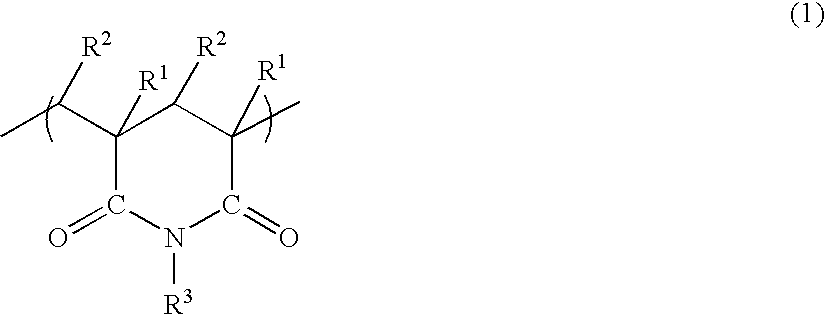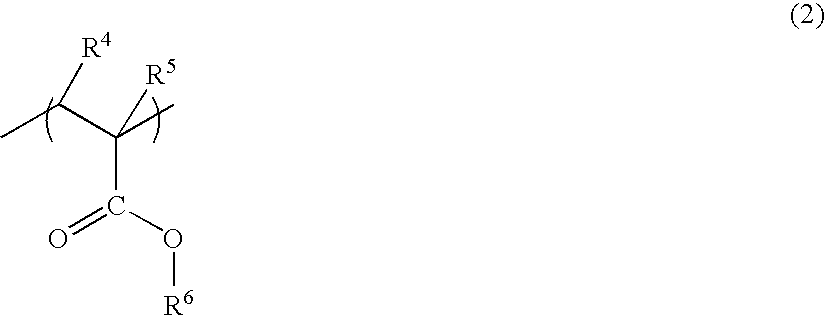Resin composition
- Summary
- Abstract
- Description
- Claims
- Application Information
AI Technical Summary
Benefits of technology
Problems solved by technology
Method used
Image
Examples
manufacturing example 1
[0101]An imide resin was manufactured by imidizing (i) a commercially available methacrylic resin (SUMIPEX MH; manufactured by Sumitomo Chemical Co., Ltd.) with use of (ii) monomethylamine serving as an imidizing agent. The extruder used herein is an interlocking unidirectional rotation type two-axle extruder having a bore diameter of 40 mm. The temperature of each temperature control zone of the extruder was set at 270° C. The screw rotation speed was set at 200 rpm. The methacrylic resin was fed to the extruder at a feed rate of 20 kg / hr, and monomethylamine was fed in 25 parts by weight of the methacrylic resin. The methacrylic resin was fed through the hopper, and was melted in the kneading block such that the kneading block was filled with the resin thus melted. Thereafter, monomethylamine was injected through the nozzle. A seal ring was placed at the end of the reaction zone so that the reaction zone was filled with the resin. After the reaction, the pressure on the vent port ...
manufacturing example 2
[0103]An imide resin was manufactured in the same manner as in Manufacturing Example 1 by imidizing a polymethyl-methacrylate-and-styrene copolymer (having a styrene content of 22 wt %) with use of monomethylamine serving as an imidizing agent. The temperature of each temperature control zone of the extruder was set at 270° C. The screw rotation speed was set at 200 rpm. The methacrylic resin was fed to the extruder at a feed rate of 20 kg / hr, and monomethylamine was fed in 20 parts by weight of the polymethyl-methacrylate-and-styrene copolymer.
[0104]Table 1 shows the imidization ratio, glass transition temperature, and styrene content of the imide resin (b) thus obtained.
manufacturing example 3
[0105]An imide resin was manufactured in the same manner as in Manufacturing Example 1 except that a polymethyl-methacrylate-and-styrene copolymer (having a styrene content of 30 wt %) was used.
[0106]Table 1 shows the imidization ratio, glass transition temperature, and styrene content of the imide resin (c) thus obtained.
PUM
| Property | Measurement | Unit |
|---|---|---|
| Glass transition temperature | aaaaa | aaaaa |
| Photoelasticity | aaaaa | aaaaa |
| Birefringence | aaaaa | aaaaa |
Abstract
Description
Claims
Application Information
 Login to View More
Login to View More - R&D
- Intellectual Property
- Life Sciences
- Materials
- Tech Scout
- Unparalleled Data Quality
- Higher Quality Content
- 60% Fewer Hallucinations
Browse by: Latest US Patents, China's latest patents, Technical Efficacy Thesaurus, Application Domain, Technology Topic, Popular Technical Reports.
© 2025 PatSnap. All rights reserved.Legal|Privacy policy|Modern Slavery Act Transparency Statement|Sitemap|About US| Contact US: help@patsnap.com



